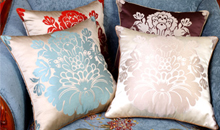India supplies "flame-out", and Chinese companies accept transfer textile orders
Source:21st Century Business Herald
A large number of textile orders previously transferred from China to India began to return.
The Indian textile industry occupies a pivotal position in the global textile industry and is the second largest textile producer in the world after China. For the Indian economy, the textile and garment industry is also one of the pillar industries. The textile industry accounts for about 15% of India' s total export revenue.
According to reports, due to the blockade measures during the epidemic, India' s textile industry exports have shrunk severely. In the new round of the epidemic, related Indian companies have lost a large number of contracts due to the inability of workers to arrive at their posts.
This brings opportunities to China, the world's largest textile country. A large number of textile orders previously transferred from China to India began to return.
"Affected by the epidemic, the textile industry in India and Southeast Asia has stopped, and some orders have been transferred to the country, which has brought some orders to the company." Sunvim recently replied to investors on the interactive platform.
The reporter's investigation found that many textile companies have successively received return orders from Southeast Asia. However, for this part of the order, the company also maintains a cautious attitude, because once the overseas epidemic improves, the return orders will also leave.
Sunvim is China's largest exporter of home textiles, mainly exporting home textile products such as towels and bedding. At the end of April this year, Sunvim shares stated on the investor interaction platform that the company is operating at full capacity and orders have been scheduled to July.
The reporter learned from Sunvim that the company's orders are continuing to grow and are now scheduled to August.
The relevant person in charge of the company told reporters, “We have indeed accepted transfer orders from Southeast Asia, most of them are from India, mainly in the middle and low end. However, the number of orders received is not much, accounting for up to 10%. The company’s orders have always been from old customers. Mainly, the proportion of new customers is not large."
The person said that, in fact, the transfer of orders in Southeast Asia began in the second half of last year, and since the first quarter of this year, the return has been slightly obvious. "The epidemic in India has been serious this year. Other overseas customers are worried about the COVID-19 virus on textile products, so they are afraid to place orders in India."
Lianfa, the global leader in yarn-dyed fabric manufacturing, also mentioned the return of orders. It stated on the interactive platform that the COVID-19 epidemic in Southeast Asia has caused some clothing orders to return to the country, but it emphasized that this is "short-term and limited".
The company also stated that the company's orders are characterized by small batches, multiple varieties, and fast delivery. At the same time, the COVID-19 epidemic is still spreading around the world, and the external environment has large uncertainties, so it is difficult to predict the annual order situation.
BROS Oriental, the domestic leader in color spinning, has seen a significant increase in product sales, and achieved a net profit of 223 million yuan in the first quarter, an increase of 213% year-on-year.
In an interview with the media recently, BROS Oriental insiders said that the company had undertaken a wave of return orders in the second half of last year. Since the fourth quarter of last year, the company's order situation has been very good, and it is close to full production. According to the order scheduling situation, it is prudently estimated that the performance in the first half of this year will achieve a sharp increase compared with the same period in 2020 when the base is relatively low, and even better than the same period in 2019 before the epidemic.
Liu Tiantian, chief analyst of the textile and light industry of Dongxing Securities, pointed out that the recent epidemics in Southeast Asia, including Vietnam and Indonesia, have aggravated. The continuous fermentation of the epidemics in these regions will have an impact on the global supply chain. The overseas production bases of Chinese textile companies are mainly in Southeast Asia. Companies that do not have an epidemic or have done a good job in epidemic prevention at their factories can better undertake this round of order transfer and are expected to seize the opportunity to expand their production capacity against the trend. The share has been increased.
Although there are opportunities for overseas orders to return, in the eyes of many business people, many orders are simply "unprofitable."
“India had a lot of home textile orders returning last year, but those prices were not high and the profits were low. These low-end products are made at a loss, so our business staff will also judge whether to take it. And, let’s look at it now. This part of the return orders does not have a big impact on performance, but the fluctuation of the RMB exchange rate has a greater impact on the company." A person in charge of a large textile company in Jiangsu told reporters.
The aforementioned person in charge of Sunvim also said, "India's textile production is mainly low-end and mid-end, and its own orders are still too late. Therefore, these transfer orders are also selected, and try to choose some products with high added value."
The person said that there was a pre-judgment for this part of the transfer order, and the dividend is definitely temporary. First of all, the number is not large. Once the epidemic situation in India improves, it will still return to India.
But in any case, this epidemic has accelerated the start of a new cycle in the global textile industry.
The export data also confirms the advantages of China's textile industry chain. According to customs statistics, from January to May this year, the country’s textile and apparel exports amounted to US$112.69 billion, a year-on-year increase of 17.3%. Among them, textile exports were US$56.08 billion, an increase of 16.1% over the same period in 2019.
The source has been identified in this article. All copyrights belong to the original anthor. In case of infringement, please contact us.
-

45 Chinese textile companies exhibiting during Showtime
-

Furlenco, a start-up furniture leasing company in India, raises US$140 million in Series D financing
-

Furniture such as sofas and storage cabinets are selling well in India
-

IKEA spends 750 million US dollars to build India's first IKEA shopping mall

 沪公网安备31010402003309号
沪公网安备31010402003309号



